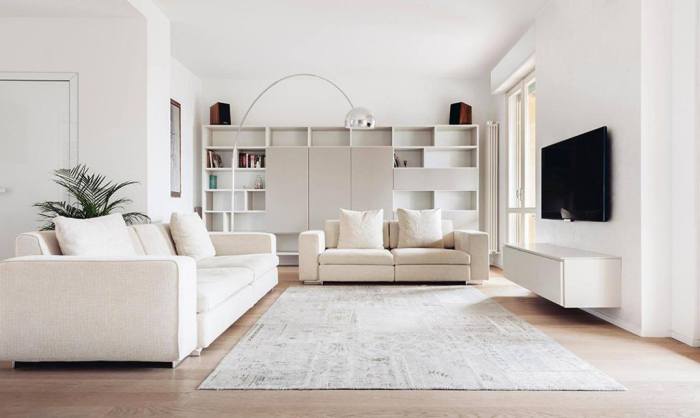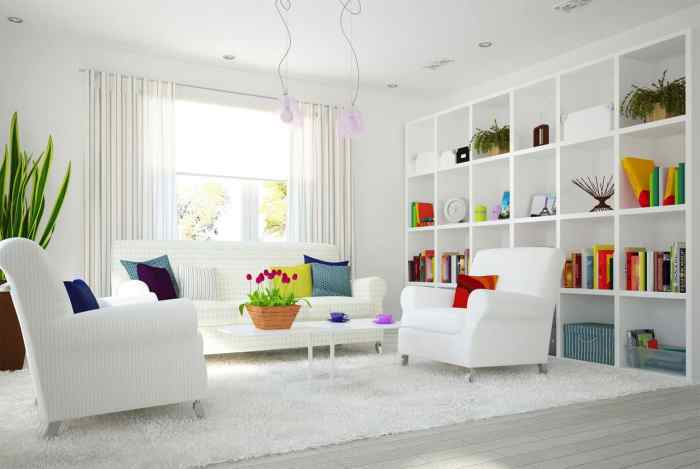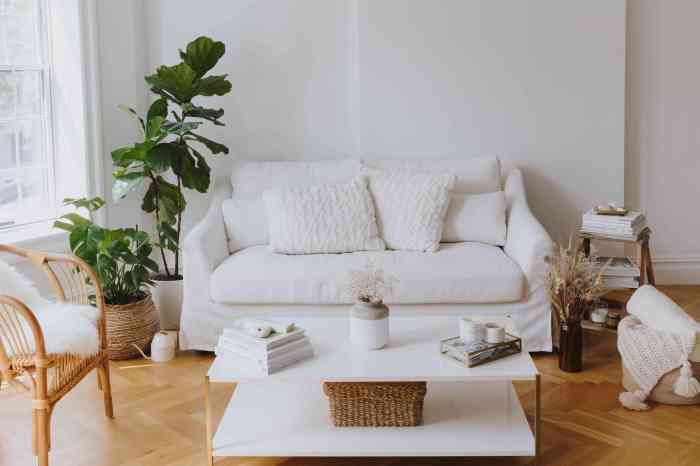Creating a Timeless Space: White Room Design Explained
Delve into the world of white room design where simplicity meets sophistication. Discover how the use of white can transform a space, making it appear larger and more inviting. From the key elements to styling tips, this guide covers it all.
As we explore the benefits, elements, styling tips, and case studies of white room design, you'll gain a deeper understanding of how this design choice can elevate any interior space.
Introduction to White Room Design

White room design refers to a decorating style that predominantly uses the color white as the main hue in creating a clean, bright, and airy space. This design approach is known for its simplicity, elegance, and versatility, making it a popular choice in interior decor.
Examples of White Room Design in Different Interior Styles
White room design can be found in various interior styles, including modern, Scandinavian, minimalist, and coastal. In modern interiors, white is often paired with sleek lines and minimalistic furniture to create a contemporary look. Scandinavian design incorporates white walls, light wood furniture, and cozy textiles for a warm and inviting feel.
Minimalist spaces focus on clean lines, open spaces, and a limited color palette, with white being a key element. Coastal interiors use white to evoke a sense of relaxation and lightness, often paired with natural textures and blue accents to bring in a beachy vibe.
Impact of White Room Design on the Overall Ambiance
White room design has a significant impact on the overall ambiance of a space. The color white reflects light, making rooms appear larger and more spacious. It also creates a sense of calmness and tranquility, making it ideal for bedrooms and living areas.
White walls can serve as a blank canvas for other elements in the room, allowing furniture, artwork, and decor to stand out. Additionally, white rooms are versatile and can easily be updated with different accent colors or accessories to change the mood and style of the space.
Benefits of White Room Design
White room design offers several benefits that can enhance the overall look and feel of a space.
Expands the Perception of Space
White room design has the remarkable ability to make a room appear larger and more open than it actually is. The light-reflective nature of white walls and furnishings creates an illusion of space, making even small rooms feel more spacious and airy.
Versatile Complement to Color Schemes and Decor Styles
One of the key advantages of white room design is its versatility in complementing various color schemes and decor styles. Whether you prefer a minimalist, modern, traditional, or eclectic look, white serves as a neutral backdrop that can seamlessly blend with any design scheme, allowing you to easily switch up accents and accessories without clashing with the overall aesthetic.
Serene and Calming Atmosphere
White room design can also help create a serene and calming atmosphere in your space. The clean and crisp look of white promotes a sense of tranquility and relaxation, making it an ideal choice for bedrooms, living rooms, and other areas where you want to unwind and de-stress after a long day.
Elements of White Room Design
White room design relies on specific elements to create a cohesive and visually appealing space. These elements include furniture, accessories, lighting, textures, and the strategic use of different shades of white.
Furniture
When it comes to white room design, furniture plays a crucial role in setting the tone and style of the space. Opt for white or neutral-colored furniture to maintain a clean and minimalist aesthetic. Pieces with sleek lines and simple designs work best in a white room to create a sense of openness and airiness.
Accessories
Accessorizing a white room is key to adding personality and visual interest. Incorporate pops of color through pillows, throws, artwork, and decorative items to prevent the space from feeling too sterile. Metallic accents like gold or silver can also elevate the design and add a touch of glamour.
Lighting
Natural light is essential in enhancing a white room design as it helps to illuminate the space and highlight its features. Opt for sheer curtains or blinds to allow ample sunlight to filter through, creating a bright and inviting atmosphere.
Additionally, incorporate artificial lighting fixtures such as pendant lights, floor lamps, and sconces to provide ambient and task lighting as needed.
Textures
To prevent a white room from appearing flat or monotonous, incorporate a variety of textures through fabrics, finishes, and materials. Mix and match different textures like plush rugs, velvet upholstery, glossy surfaces, and matte finishes to add depth and visual interest to the space.
This layering of textures creates a dynamic and inviting environment.
Shades of White
While white may seem like a singular color, there are actually numerous shades and undertones that can be used to add dimension to a white room. Experiment with warm whites, cool whites, creamy whites, and off-whites to create contrast and depth in the space.
Mixing different shades of white can help highlight architectural details, furniture pieces, and accessories, resulting in a harmonious and visually captivating design.
Styling Tips for White Room Design

When designing a white room, it's essential to create visual interest to prevent the space from appearing sterile or bland. One effective way to do this is by incorporating a variety of textures and patterns.
Layering Textures and Patterns
To add depth and dimension to a white room, consider layering different textures such as plush rugs, velvet throw pillows, or a knitted throw blanket. Mixing patterns like geometric prints, floral designs, or stripes can also bring visual interest to the space.
Just be sure to maintain a cohesive color palette to avoid a cluttered look.
Adding Pops of Color or Metallic Accents
While white rooms are known for their clean and minimalistic look, incorporating pops of color through accessories like artwork, vases, or accent furniture can liven up the space. Additionally, introducing metallic accents such as gold or silver finishes on light fixtures, mirrors, or hardware can add a touch of glamour to the design.
Balance Simplicity and Sophistication
To achieve a harmonious balance between simplicity and sophistication in a white room, focus on selecting furniture and decor pieces that are both sleek and elegant. Opt for clean lines, minimalistic designs, and high-quality materials to create a sophisticated aesthetic without overwhelming the space.
Remember, less is often more in white room design.
Case Studies of White Room Design

White room design has gained popularity in both residential and commercial spaces due to its clean and timeless aesthetic. Let's explore some case studies that showcase the implementation of white room design.
Residential White Room Design
In a residential setting, a white room design can create a sense of spaciousness and tranquility. By combining white walls, furniture, and decor with natural light, a living room can feel bright and airy. Adding touches of greenery or wooden elements can bring warmth to the space, balancing the crispness of the white palette.
Commercial White Room Design
White room design can also be successfully implemented in commercial spaces such as offices or retail stores. A white color scheme can create a clean and professional environment, ideal for productivity and focus. By incorporating sleek white furniture and minimalistic decor, a commercial space can exude a sense of sophistication and modernity.
Closing Notes
In conclusion, white room design offers a versatile and timeless approach to interior decor. By incorporating the right elements and styling techniques, you can create a space that exudes elegance and tranquility. Embrace the beauty of white in your design journey today.
Popular Questions
How can white room design impact the ambiance of a space?
White room design can create a sense of spaciousness and airiness, making a space feel fresh and inviting.
What are some tips for balancing simplicity and sophistication in white room design?
To balance simplicity and sophistication, consider incorporating textures, patterns, and pops of color to add visual interest.
Why is natural light important in enhancing white room design?
Natural light can amplify the brightness of white, creating a vibrant and welcoming atmosphere in a white room.